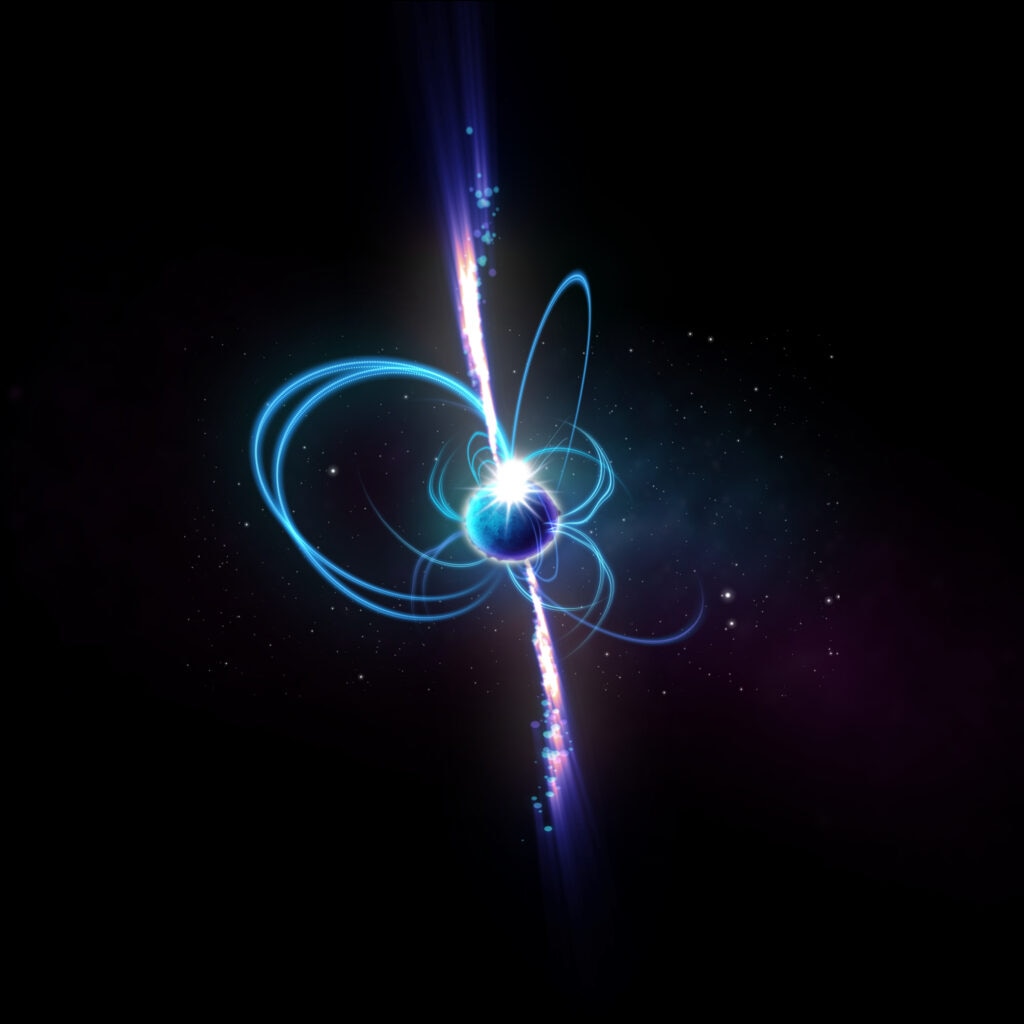Create a free profile to get unlimited access to exclusive videos, sweepstakes, and more!
The mystery of the disappearing flash in space
Spoiler: it wasn't aliens.

Imagine unexpectedly seeing something so luminous light up the vacuum of space that you couldn’t possibly doubt it was there — until it completely vanished.
While most of the planet was on lockdown at the height of the pandemic, radio astronomer Natasha Hurley-Walker stumbled upon a cosmic flash that seemingly came out of nowhere. She and her colleagues remotely zapped speculation back and forth as they tried to figure out what the thing was. Supernova? Zombie star? Aliens? After supernovas and extraterrestrial superstructures were ruled out, they became suspicious of stars that had gone undead.
The monster was hiding in observations from the Murchison Widefield Array (MWA). Its radio antennas measure polarization, or the extent to which the vibrations of a wave, like radio waves, are going in one direction. After correcting for anything that was in the way, Hurley-Walker and her team, who recently published a study in Nature, found that the pulses were very polarized and linear no matter what angle they were viewed from and lasted up to a minute. But what could have been giving them off?
“The MWA observed with a time resolution of 0.5 seconds, so that defines the smallest features we can see in the pulses,” she told SYFY WIRE. "But since the pulses last for 30 to 60 seconds, that is quite a lot of resolution. They are sometimes smooth, and sometimes very spiky.”
Zombies onscreen are pretty straightforward. Zombie stars, not so much. There are several forms that the cores of dead stars can take. Neutron stars and white dwarfs are cores that remain after the collapse of low-mass (white dwarfs) or high-mass (neutron stars) stars. Pulsars, which are all neutron stars (though the opposite is not always true) form when the cores of massive collapsed stars spin upward and superfast, which compresses their magnetic fields. These highly magnetized stars spew so much energy that they create radio emissions.
Hurley-Walker and her team are not ruling a white dwarf or pulsar out, but there is one type of stellar zombie they are especially focused on. Magnetars are neutron stars with the most powerful magnetic fields ever. These extreme objects behave like highly magnetized pulsars that vomit out gargantuan amounts of energy, including radio emissions, but wear themselves out in a few months. They end up too sluggish to produce radio waves anymore and become undetectable. This is why it is possible the source could be an ultra-long period magnetar.
“There's a mystery as to how our source could be so slow but also magnetic enough to produce radio emission, since neutron star magnetic fields should also decay,” Hurley-Walker said. “That's why theorists thought that ultra-long period magnetars would exist, but be invisible.”
There is always a chance for false positives, which can be set off by everything from TV signals to satellites. That doesn’t seem to be what is going on here. Because pulsars and magnetars burn their energy so fast, invisible ones should be scattered all over the Milky Way. This could be one of many dead things. Ultra-long period magnetars are theoretical objects that should rotate more slowly than most magnetars, which could explain the longer pulses, but are also invisible. What was completely unexpected was how bright this thing was if that is what it is.
“I think that the evidence points toward an ultra-long period magnetar, in which case, the magnetic field only stayed twisted for some time, and after it relaxed, the radio emission ceased,” said Hurley-Walker.
There is also a chance the disappearing flash could have come from a white dwarf pulsar, whose dark spots (sunspots) produced really curved magnetic fields that gave off radio emissions for a while. Whatever it is still has astronomers baffled. It’s not aliens, but the truth is out there.


























